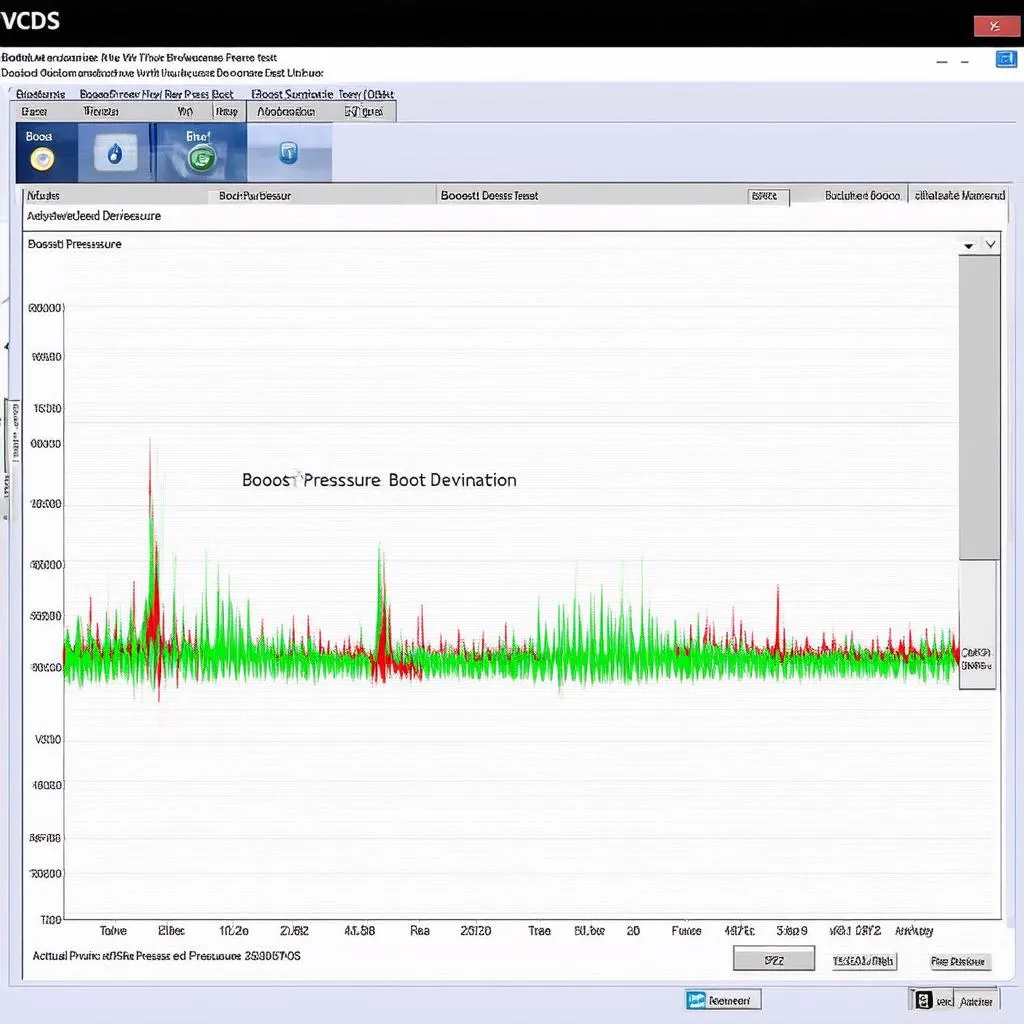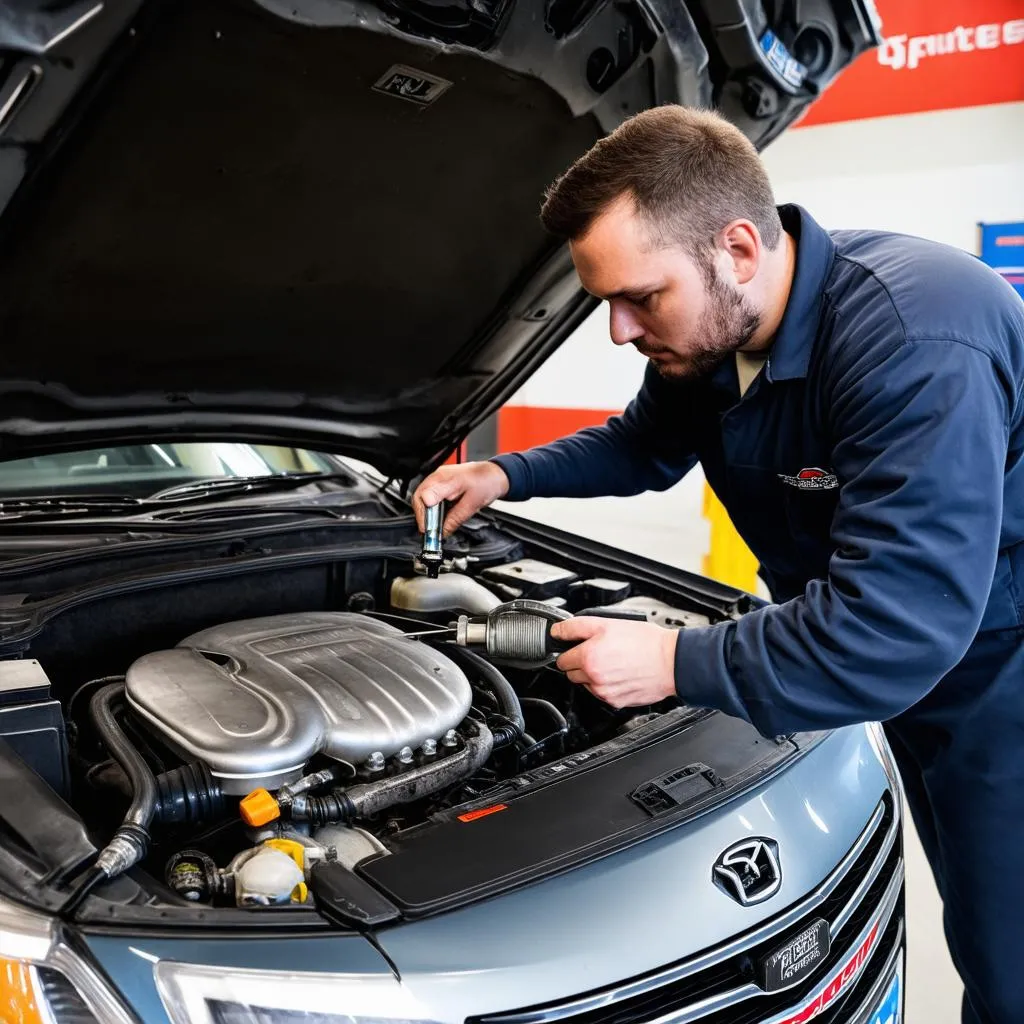The VCDS, or VAG-COM Diagnostic System, is a powerful software tool used to diagnose and troubleshoot issues in Volkswagen Audi Group (VAG) vehicles. Among its many features, there’s a function often referred to as the “VCDS Turbo Button.” However, this nickname can be misleading as it suggests a physical button that instantly boosts turbocharger performance. Let’s demystify the “VCDS Turbo Button” and explore its actual functionalities.
Understanding the VCDS and Turbocharger Diagnostics
Before we delve into the “turbo button,” it’s essential to understand that the VCDS software itself doesn’t directly modify your car’s performance. Instead, it acts as a window into your vehicle’s electronic control units (ECUs). Through these ECUs, the VCDS can read and clear fault codes, log data from various sensors, and perform specific tests and adaptations.
Now, when people refer to the “VCDS Turbo Button,” they’re often talking about the software’s ability to perform a “Boost Pressure Deviation” test. This test helps diagnose issues related to the turbocharger system, including:
- Underboost or Overboost Conditions: The test compares the actual boost pressure generated by the turbocharger with the expected boost pressure according to the ECU’s map.
- Wastegate Functionality: It can help determine if the wastegate, which regulates boost pressure, is operating correctly.
- N75 Valve Performance: This valve controls the amount of pressure sent to the actuator that operates the wastegate. The test can reveal problems with the N75 valve’s function.
How the “VCDS Turbo Button” Test Works
It’s crucial to understand that the test itself does not magically fix any problems. It’s a diagnostic procedure, not a repair button. Here’s a simplified breakdown of how the test typically works:
- Connecting VCDS: You’ll connect the VCDS interface to your car’s OBD-II port and launch the software on your computer.
- Accessing Engine Module: Navigate to the engine control module within the VCDS software.
- Selecting “Boost Pressure Deviation” Test: This option is usually found within the “Basic Settings” or “Output Tests” section.
- Running the Test: The software will instruct the engine to run at specific RPMs while monitoring boost pressure. You’ll need to follow the on-screen prompts and possibly perform actions like accelerating the vehicle.
- Analyzing the Results: The VCDS will display graphs and data comparing actual and specified boost pressure. This information is crucial for identifying any deviations and diagnosing the root cause of a turbocharger-related problem.
Benefits of Using VCDS for Turbocharger Diagnostics
- Early Detection: Regularly running the “Boost Pressure Deviation” test can help identify minor issues before they escalate into major and costly repairs.
- Accurate Diagnosis: VCDS provides precise data, making it easier to pinpoint the exact cause of a turbocharger problem, unlike generic OBD-II scanners.
- Cost Savings: By accurately diagnosing issues yourself, you can potentially save on expensive diagnostic fees at a mechanic.
 VCDS Turbo Test
VCDS Turbo Test
Important Considerations and Precautions
- Professional Assistance: While VCDS is a powerful tool, interpreting the results requires some automotive knowledge. If you’re unsure about anything, consult a qualified mechanic.
- Safety First: Perform the test in a safe environment with the engine warmed up to operating temperature.
- Modifications: If your vehicle has aftermarket performance modifications, the test results might not be accurate.
FAQs About the VCDS Turbo Button
Q: Can the “VCDS Turbo Button” increase my car’s horsepower?
A: No, the test does not alter your car’s performance or add horsepower. It’s a diagnostic procedure.
Q: Is it safe to run the “Boost Pressure Deviation” test regularly?
A: Yes, running the test periodically as part of a preventative maintenance routine is generally safe and can help identify issues early on.
Q: What do I do if the test shows a deviation in boost pressure?
A: If the test reveals a problem, further diagnosis is needed. Consult a qualified mechanic specializing in VAG vehicles or turbocharger systems.
 Mechanic Diagnosing Turbo
Mechanic Diagnosing Turbo
Looking for Reliable Diagnostic Tools?
Eurocatool offers a range of high-quality diagnostic tools, including the VCDS system, to help you keep your VAG vehicle running smoothly. Contact us today for expert advice and to explore our product selection.
